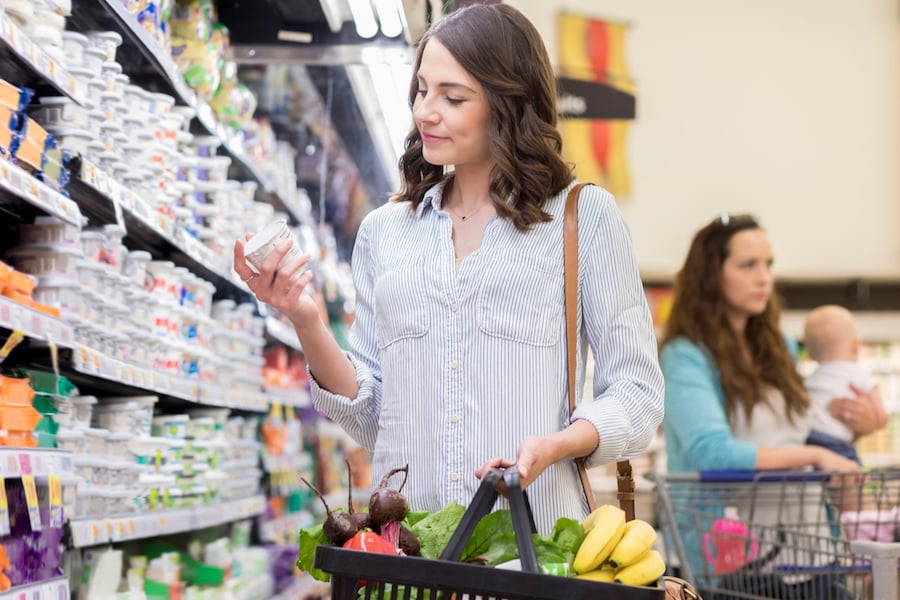
Having clean labels is no longer a trend. It’s an expectation.
Arguably, nothing has dominated the food industry over the last decade more than clean label initiatives, and it will continue for the decade to come. Growth in the clean ingredient category is expected to continue with an impressive 17.5% CAGR forecast through 2030.
More than half of food manufacturers have already converted to clean label formulations, and for good reason: Seven in 10 consumers are willing to pay more for products with natural and clean label claims.
Within the clean label category, however, are numerous nuances and considerations. Formulators and R&D professionals in the food industry are keeping a watchful eye on the following clean label ingredient trends.
FDA “Healthy” Food Labeling
The Food and Drug Administration says that products labeled as “healthy” must meet certain criteria for nutrition labels. They should:
- Contain a certain meaningful amount of food from at least one of the recommended food groups or subgroups (e.g., fruit, vegetable, dairy, etc.)
- Adhere to specific limits for certain nutrients, such as saturated fat, sodium and added sugars (e.g., the limit for sodium is 10% of the DV per serving—230 milligrams per serving)
The FDA also plans on developing symbols to be placed on food packaging that meet their “healthy” guidelines. Arguably, some current label claims can be confusing or misleading to consumers. For example, a product labeled as “low fat” may suggest it is a healthier alternative, yet it could have a significant amount of sugar. The new symbols will aim to help consumers cut through the confusion and recognize healthier options more easily.
Fresh fruits and vegetables would automatically qualify, but prepared food products would have to meet criteria for nutrient requirements and limit added sodium, sugar and saturated fats. Proactive R&D teams are getting ahead of the curve by formulating products that align with the FDA’s recommendations before they become mandatory.
INGREDIENT RECOMMENDATIONS:
- Clean-label Grande Gusto® helps reduce sodium content by up to 10% in dry mix and fluid cheese sauces by partially replacing cheese or cheese powder. In independent studies, participants ranked Grande Gusto higher for taste, texture and other sensory attributes
- All-natural Grande Bravo® cuts fat and calories in soups, sauces and dips when replacing cream, yet it maintains signature dairy flavors and creamy textures without the use of additional emulsifiers or masking agents
It’s worth noting that any final FDA food labeling regulations that are issued in 2023 or 2024 must be uniformly complied with by January 1, 2026.
RELATED RESOURCE: Low Fat is Making a Comeback: Formulation Guide
Sustainable Ingredients
Eco-conscious consumers want to know the environmental impact of the foods they consume. Labeling that can demonstrate a product’s sustainability initiatives will appeal to this growing consumer segment. Climate-friendly claims that center around water conservation, reduced energy consumption, fair treatment of animals and a company’s overall environmental footprint are key to supporting sustainable farm-to-fork initiatives.
Unfortunately, many commodity ingredients don’t have a strict chain of custody to help ensure ethical sourcing or practices. Those tasked with finding new or alternative ingredients to include in their formulations will need to thoroughly vet suppliers and confirm their sustainable practices in order to include such claims on their packaging.
INGREDIENT RECOMMENDATIONS:
- All whey products produced by Grande Custom Ingredients Group are considered sustainable “upcycled” ingredients from the cheesemaking process and have a smaller environmental impact than plant-based proteins. Ingredients are sourced from dedicated dairy producers in the heart of the Midwest. These producers uphold the highest ethical and safety standards
- Another advantage of Grande Custom Ingredients Group products is their consistent and readily available supply that remains price-stable over time, helping to eliminate market volatility and supply chain disruption
RELATED ARTICLE: Grande Custom Ingredients Group Sustainability Report Results
Sustainable Packaging
Not only will ingredient claims be important, but the actual packaging that those claims are printed on will be under scrutiny. Consumers who are concerned about the food industry’s impact on climate change and the environment are paying attention to sustainable packaging.
Delivering natural ingredients inside packaging that can’t be easily recycled or isn’t biodegradable feels counterintuitive to many consumers. Brands that can promote the health of the planet in combination with the health of its consumers could gain a competitive advantage.
A Return to Real Ingredients
One thing became clear as the plant-based meat market fell considerably in 2022—people want the real thing. Another potential reason for the shift is that many plant-based products have extensive ingredient lists with unrecognizable additives, contradicting the perception that they’re better for you.
That’s not to say that real meat products don’t have room for improvement. Eliminating chemical-sounding fillers and binders is a major initiative among many processed meat producers. Doing so with natural ingredients while also delivering appetizing textures and flavors and maintaining yield requires innovative ingredients.
INGREDIENT RECOMMENDATION:
- While all-natural Grande FestoTM is not considered a binder or a filler, it excels in moisture maintenance and retention in ground and processed meat applications, resulting in a juicer, more flavorful product for the consumer. Unlike commodity ingredients, it enhances the natural umami flavors of meat products while significantly reducing purge, allowing for more saleable volume. Labeled as a hydrolyzed whey protein, consumers recognize it as a familiar and trusted ingredient
RELATED RESOURCE: Guide to Better Meat Applications
In the end, consumers want to know where ingredients come from, how a product was produced, whether animals were mistreated in the making and the impact on the environment. They also want to know that those ingredients are wholesome and support their health goals.
The list is long. Yet ingredients produced by Grande Custom Ingredients Group align with what consumers want while also delivering the unrivaled quality and functionality manufacturers demand.
Contact the collaborative food scientists at Grande Custom Ingredients Group to see how our functional whey protein products can help clean up labels and exceed your expectations and those of your customers.





